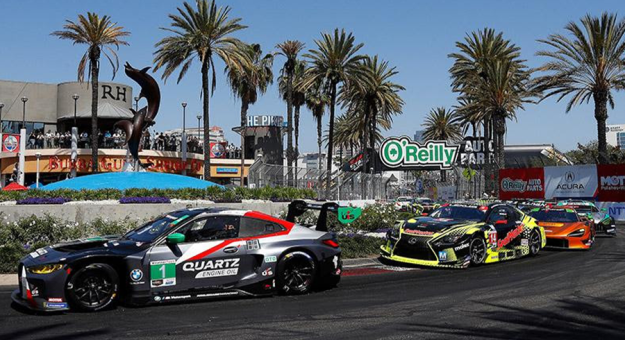DAYTONA BEACH, Fla. — As the IMSA WeatherTech SportsCar Championship departs Florida after the first two races of the year to the third out west in California, the chasm between them is as wide as the coast-to-coast journey.
How wide? Let’s count the ways:
• Leaving by car, the one-way distance from either Daytona Beach or Sebring, Florida, to Long Beach, California, is over 2,500 miles.
• The 2023 Rolex 24 At Daytona overall winning car completed 2,787.48 miles (783 laps of a 3.56-mile road course).
• The 2022 Long Beach overall winning car completed 143.664 miles (73 laps of a 1.968-mile street circuit).
• The Rolex 24 At Daytona and Mobil 1 Twelve Hours of Sebring comprise 36 hours of racing.
• The Acura Grand Prix of Long Beach comprises 100 minutes.
• The 2023 Rolex 24 class winners in GTP (37), GTD PRO (30) and GTD (26) made a combined 93 pit stops.
• The 2022 Long Beach class winners in DPi (one), GTD PRO (one) and GTD (one) made a combined three pit stops.
You get the point. These races are as far apart in terms of mileage and strategy as they are by distance.
In a 100-minute race, a WeatherTech Championship team must optimize its race plan to qualify up front and execute its sole scheduled pit stop.
Mistakes – and flukes – are magnified.
Teams can recover from a mistake at Long Beach – witness Sebastien Bourdais’ off, then last-to-first heroics in Daytona Prototype international (DPi) last year – but it’s not recommended.
Meanwhile, Pfaff Motorsports enters Long Beach on the heels of a Sebring GT Daytona Pro (GTD PRO) win but also a bizarre retirement last year. A rogue wheel nut from another car bounced into and punctured its radiator on its lone pit stop.
From a strategy standpoint, the difference is immense between the Florida races and Long Beach.
Paul Miller Racing can speak to both well, having just captured a GT Daytona (GTD) win at Sebring and winning each of the last two Long Beach GTD races. The aptitude from the pit box is as important as the skills delivered by Bryan Sellers and Madison Snow in the team’s No. 1 BMW M4 GT3.
Team manager Mitchell Simmons and engineer Lars Giersing noted you have to run the first 75 percent of an endurance race in lead range, before dropping the hammer and optimizing both car setup and pit strategy for the last 25 percent. Going off strategy rarely works at Long Beach. But it did at Sebring, when a risky strategy call coupled with yellows delivered the win.
At Long Beach, there’s almost no margin for error.
“For endurance races we will often use qualifying as another test session as qualifying position is somewhat inconsequential,” Simmons explained.
“For a short sprint race there is only one thing to worry about: qualifying. Qualifying closely followed by restarts are the key to a short sprint race. We will try to get the very last hundredth out of the car for qualifying and usually leave that setup on for the race.”
Giersing added, “Long Beach is wildly different. Track position is of utmost importance, so qualifying is your number one concern going into the weekend. At the start of the race you must be out front and be able to control the race.”
The PMR car has spent most of the last two years at Long Beach doing just that, having led 67 of 69 laps in 2022 and 68 of 73 laps in 2021.
Then, you have to nail the pit stop.
“Pit stop execution is key as well as not getting penalties,” Simmons said. “A single crew member without their visor down will cost us eight positions. It’s a constant ‘what if’ scenario during a sprint race.”
“You only have one shot to make your pit stop, so that stop has to be excellent — there’s no buffer in such a short race to make up for any mistakes,” Giersing added.
The beauty of variety in IMSA is the importance of executing either way, whether the race is 12 or 24 hours or merely 100 minutes.
And, whether it’s in Florida or California.
